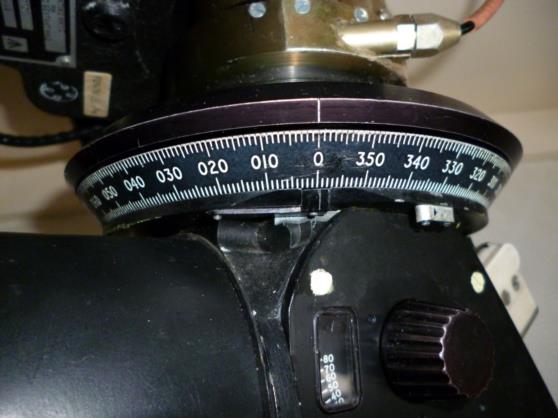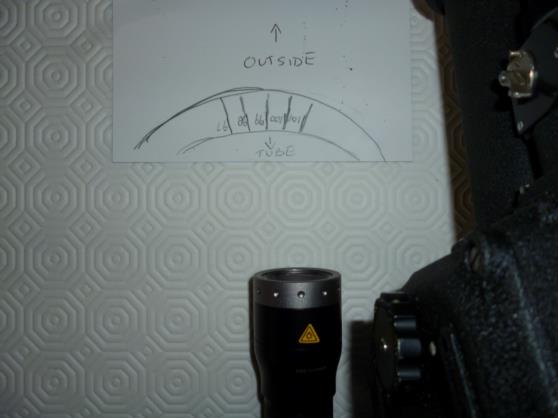
NavList:
A Community Devoted to the Preservation and Practice of Celestial Navigation and Other Methods of Traditional Wayfinding
From: David Pike
Date: 2016 Jan 29, 02:18 -0800
Gary LaPook wrote: I am attafching the sextant mount pages from AFPAM 11-216. I have all the operations, maintenance, and parts manuals for the Kollsman sextants, periscopic and handheld. Too voluminous for me to scan in.
and also:The scale on the Kollsman is designed as an "inverse relative bearing scale" and the attached pages show how it is utilized.
My! 72mb is quite a down load. My computer had to swallow several times to get all that down. The 2011 edition of the US Flight Navigator Handbook is an excellent document written in the modern style with coloured diagrams. For those bold enough to unload it, the pages Gary’s referring to are pages 12-10 and 12 – 11. The one thing the colour pictures don’t seem to show is what’s actually written on the azimuth ring, as opposed to what you see through the eyepiece. Not having a mounting of my own, I had to experiment (see below).
I’m not sure though that inverse relative bearing refers to the way the scale is marked. The anticlockwise marking of the azimuth ring is common to many peri-sextants (see photos of the Smiths Mk2B). The only reference to the term which includes the word “scale” on Google is the one from Gary. I think it simply refers to the method of doing a heading check (or finding a star see page 10-2) using a relative bearing, the “inverse” meaning you go about the job backwards (but I could be wrong). The IRB method is an impromptu way of getting a heading check when you’re not fully prepared. E.g. You’re flying in cloud, and you’ve not been able to get an astro heading check for a while. Suddenly, the pilot says “If you get up there now Nav, you’ll get a glimpse of the sun for a few seconds. You get to the sextant. You’ve not got an azimuth calculated, so you crank the mounting to 000.0, and you take the relative bearing of the Sun, which being bright and only one, isn’t too difficult to find, even allowing for the narrow field of view of a peri-sextant. When you get back to your lair, you calculate the azimuth of the Sun at the time of the check, and you add it to the relative bearing to get the true heading. Hopefully, it agrees with the true heading from the aircraft’s compass system which, with a bit of luck, the pilot remembered to note at the time of the check.
E.g. you’re over Greenwich England with an aircraft with a Kollsman peri-sextant. Its 10:00UTC, and today the azimuth is going to work out as 150. The heading is 090, and you set 000 on the azimuth winder. You find the Sun 60 right of the nose, but because of the way the azimuth ring is marked, you read 300 through the eyepiece. So, back in your lair, you calculate the Sun’s azimuth at
The really intriguing thing is how, if the azimuth ring is supposedly marked to increase in one direction, it appears to increase in the opposite direction through the eyepiece. Without a mounting to work with, I had to experiment with pieces of card held above the spy-hole in the sextant. I found that the lens system in the sextant azimuth viewer turns the image upside down and back to front. E.g. a bit like when you see a photo in the newspaper with a chap’s medals and flying badge on his right breast. The bit of card in the photograph was the one that worked.
Fergus, where’s your museum? Is it close enough for me to bring my Kollsmans to try? I’m at 53.10N 000.32W. I’d appreciate a photo of the viewing window in your actual mounting with the scale visible, just to see if I’m correct. DaveP









